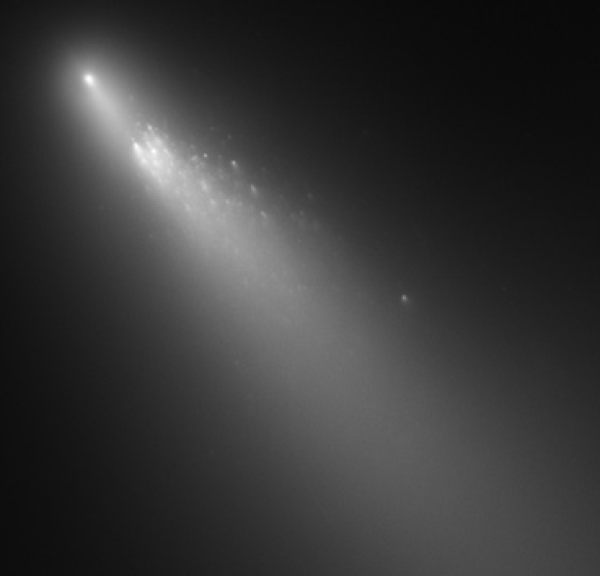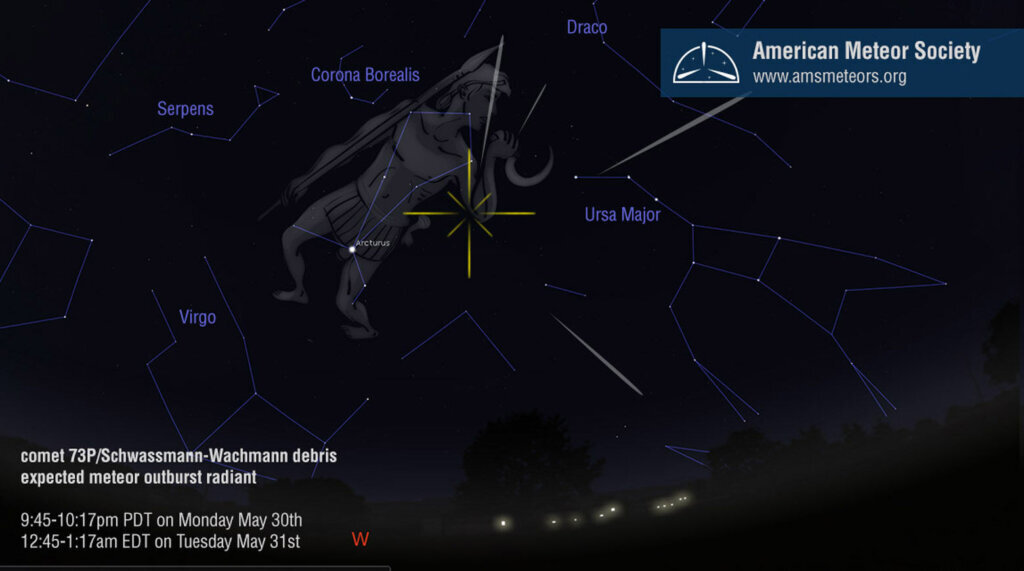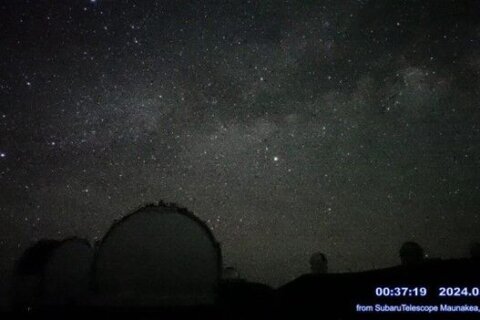The forecast predicts clear skies in the D.C. area for Monday night into Tuesday, and that is a good thing for avid skywatchers. Why? Because there’s a chance we may see a rare astronomical event called a meteor storm.

The meteors may be visible as Earth passes through the remains of a comet that split apart three decades ago and is still fragmenting.
It is predicted (but not a certainty) that this occurrence known as Tau Herculids will be visible in our night skies around 1 a.m. EDT on May 31.
The only way we will know is to look.
Fortunately for those us out that night, it will also be a new moon, so its brightness will not interfere with witnessing the event.
Still, visibility for the meteors is likely to be faint, so it really is a requirement to get far-far away from city lights and other sources of light pollution.
For myself, the plan is to go out at midnight to a dark sky site in the country and watch the skies using an adjustable lounge chair to keep comfortable. I will also be lathered in bug/tick spray and have a jacket in case of cool temps.
If you also find yourself outside waiting for the meteor storm, my advice is to use only a red color flashlight — to help preserve night vision.
As a point of reference, the bright orange star Arcturus is near the point in the sky where meteors should originate from. Nonetheless, you will want to be in a place where you can see as much of the sky as possible.

(Photo: American Meteor Society)
For photographers, mounting a camera that can take long exposures and has a wide-angle lens to a tripod may be your best chance to capture this event. Visibility in camera may be challenging, so don’t get too distracted with technical settings that you miss the actual meteors.
Bottom line: Fingers crossed, but this is a hit-or-miss sky event. We won’t know if the meteor storm happens unless we look. Any time spent under the stars is special and we might just get lucky to see a (likely) once-in-a-lifetime event.
Follow my daily blog to keep up with all the latest news in astronomy and space exploration. You can also email me at skyguyinva@gmail.com.







